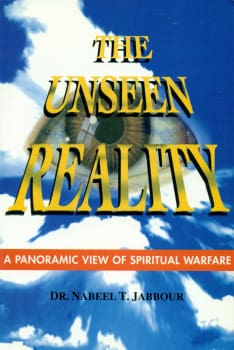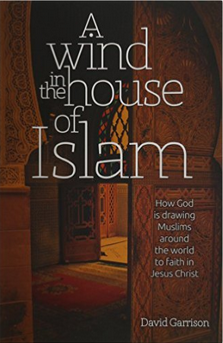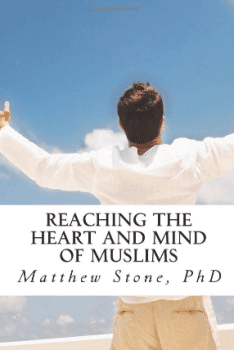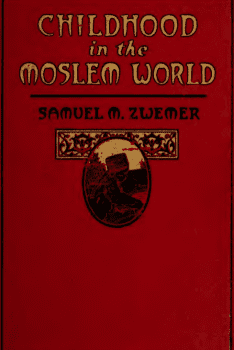American Fear of Muslims
Perhaps the first incident that began to plant negative seeds about Muslims began with the 1979 Iranian hostage crisis. This might be the case, but most Muslims remained in the background until the attacks on 9/11 brought American Muslims to the forefront. In truth, it would be naïve not to acknowledge that these ghastly attacks were significant in shaping the American perception of Muslims.
Moreover, 9/11 was an unfortunate introduction to Muslims because for the most part Muslims in America had cultivated a fairly quiet presence in the US. In fact, before 2001, polls indicated that the opinion about Islam was divided between positive and negative opinions. But, interestingly, Carl W. Ernst notes, “The majority of Americans [in these polls] registered no opinion at all because of lack of knowledge” (emphasis added). Kambiz Ghanea Bassiri suggests that it is difficult to even find polls about how Americans feel about Islam or Muslims that predate 2001. He explains,
“In one of these rare surveys conducted a few days before the 1993 World Trade Center bombing, one can see that the general public for the most part had little knowledge and interest in Islam at this time. When asked to give their impression of Islam, the majority (62%) said that they ‘haven’t heard enough to say’ or they are ‘not sure.’ 14% had favorable impressions and 22% had unfavorable impressions. When asked ‘when you think of the religion of Islam, what comes to your mind?’ The respondents gave widely disparate answers, with the largest group (36%) indicating either ‘nothing’ or ‘not sure.’ The second largest group (21%) indicated ‘Mideast’ or ‘Arabs.’ When asked if a second thing comes to mind about Islam, the overwhelming majority (80%) failed to mention anything.”
Therefore, it seems probable that the majority of Americans’ opinions about Islam and Muslims were formed after the 1993 World Trade Center bombing and even more so by the subsequent tragic events of 9/11. Prior to this, the American general public knew little about Muslims. Six months after the 9/11 tragedies, 2,652 attacks against Muslim Americans were reported, which was an unprecedented number. These numbers seem to indicate the direction the general population’s opinion was heading in regard to Muslims.
After 9/11, the media’s role was significant in molding the opinion of the general population in regard to Muslims and cannot be understated. In fact, most Muslims in the West place blame on the media for their poor portrayal, which has resulted in backlash for Muslims. Kerim See, in relation to the media coverage of 9/11, said, “Alternative voices, when heard, were brushed aside as interviewers sought confirmation for their pre-existing stereotypes of Islam.” Studies have found that even watching a small portion of the media stories that negatively portray Muslims can lead to prejudice. Some of the news stories include portraying Islam as being “backwards,” by associating it with oppression of women and honor killings. One psychologist described the media’s portrayal of Muslims as “dehumanizing.”
At times the stereotype is communicated in a more subtle form. For instance, TV news programs will feature a woman wearing Muslim attire such as a hijab or niqab while discussing a news story related to terrorism or violence. Obviously, the result is a direct association of Islam to terrorism communicated through a silent image. At other times, the correlation is more blatant, such as the fact that “…most news about Muslims includes such terms as terrorist, extremist, and radical.” Obviously, the media is reinforcing these negative stereotypes. This is further evidenced by a study that examined editorials about the “‘War on Terror’ in the ten largest newspapers in the USA…Terms such as ‘patriotic’, ‘heroic’, ‘tolerance’ and ‘generous’ were frequently used to describe Americans and their allies (and later ‘good’ Arabs), whereas ‘cowardly’, ‘vicious’, ‘jealous’ and ‘extremist’ were terms used to describe everyone else.”
Unfortunately, these views are then conveniently piped into the average American’s home via television, Internet, newspaper, and books. Even American popular culture propels this negative stereotype in TV shows and movies. This projection typically involves, “the presentation of Middle Eastern ‘terrorist’ caricatures in films such as True Lies and The Siege.” Other examples include the Denmark cartoons of Muhammad, which worsen the predicament and spread animosity. Carl W. Ernest reveals the devastating consequence of this when he describes,
“For the many Americans who have no personal experience knowing Muslims as human beings, the overwhelmingly negative images of Islam circulated in the popular media amount to prejudice – defined by the Oxford English Dictionary as ‘preconceived opinion not based on reason or actual experience… Unreasoned dislike, hostility, or antagonism towards, or discrimination against, a race, sex, or other class of people.'”
Even journalists cannot seem to remain neutral and end up coloring the depiction of Muslims. Juan Williams, an American journalist, once said, “When I get on the plane…if I see people who are in Muslim garb and I think, you know, they are identifying themselves first and foremost as Muslims, I get worried. I get nervous.”
Studies have found that the majority of Americans admit to not having a grasp on the teachings of Islam, yet it appears they are getting their education about Islam from the media. Studies indicate that the strongest reason for negative attitudes about Muslims is “perceived symbolical and realistic threat.” The media capitalizes on these fears, which only heightens prejudice. The media is inciting this fear because violence, terror, and fear attract viewers and make for a good story. Sherman A. Lee reveals, “Equating Islam with danger is so prevalent in media depictions of the religion that the stereotyped perspective is believed to be a part of mainstream American culture.” On the other hand, peaceful attempts by Muslims seem to be largely ignored by the media. John Esposito cites an example,
This charge that Muslims do not condemn terrorism is made repeatedly in the media despite the fact that post 9/11 many, many statements have been issued by Muslim leaders and organizations from all over the world, including a major joint statement by global religious and intellectual leaders (Wiedemann message). Unfortunately major media outlets…do not seem to find them ‘newsworthy.’
The impact of this unfair silencing of Muslims who are not extremists was demonstrated in the comments on the surveys received for this paper. One person commented, “[I] would like to know why the good Muslims are not taking a stand against the bad Muslims.” And, another person added, “I would like to see more Muslims…speak out about terror in the world and here in the USA. My perception is they don’t want to say anything.” Perhaps the better question that needs to be posed is in terms of why the media is not giving a fair platform for these Muslims who are speaking out against extremism.
One surprising source that feeds the negative perception of Muslims is actually the government. The USA Patriot Act is often cited as hindering the perception of Muslims in the US as it puts Muslims on the defense. Jackleen Salem states,
“Despite the US government’s messages to the American public to not have animosity toward Muslims, the practices of the government have been quite the contrary, implementing and enforcing a great deal of institutional discrimination…Their ethnic and religious association turned them into second-class citizens.”
If the government is prejudiced toward Muslims and suspicious of them, then it logically follows that Americans would follow-suit in their attitudes and behavior. If the government does not behave as if it trusts Muslims, then neither will the general public.
In addition, politics also plays a role in how Americans form their opinions, and particularly when politics overlaps with the media. For example, Ann Coulter is a famous conservative Republican who has many books spouting her views, and she has conducted many interviews in the media. One of her quotes from the National Review has her proclaiming about Muslims, “We should invade their countries, kill their leaders, and convert them to Christianity. We weren’t punctilious about locating and punishing only Hitler and his top officers. We carpet-bombed German cities; we killed civilians. That’s war, and this is war.” The perception of Muslim Americans also differs down partisan lines. The Pew Research Center found that “62% of Republicans say that Islam encourages violence more than other religions, compared with…29% of Democrats.” In fact, 48% of Muslims in American surveyed actually described Republicans as “unfriendly” toward Muslims. Thus, when politics is partnered with the media, this negative perception potentially becomes contagious as it plays out in front of Americans.
In all actuality, it is difficult to pinpoint just one particular factor as the root issue, because it is a multifaceted problem. However, it does seem that the media contributes heavily to the frenzy of Islamophobia. In the end, it is important to determine where these ideas and attitudes are stemming from to try to be aware of them and curtail their influence.
Factors that Shape American Christians’ Perception of Muslims
Subsequently, the question still remains as to why Christians actually seem to possess an even more negative perception of Muslims than the general population. Obviously, the same factors that influence the American perception are also foundational in establishing the Christian perception, but since the Christian perception is more severe, there must be additional factors that are specifically geared toward Christians. While the general public deals primarily with the media, Christians have prophecy, Christian television programs, books, Muslim background believers, and preachers helping shape their perception. These factors can sometimes feed a negative depiction of Islam to Christians, which might convince Christians that Muslims are attacking their morals and values. This could potentially paint Islam as the enemy of Christianity and of a Judeo-Christian society. Consequently, these ideas can transform Christians from children of God into soldiers for Christ in a battle waging war from a good versus evil perspective.
One recent Reuters’ story recently captured this idea, “Saint Michael, the archangel of battle, is tattooed across the back of a U.S. army veteran who recently returned to Iraq and joined a Christian militia fighting Islamic State in what he sees as a biblical war between good and evil. Brett, 28, carries the same thumb-worn pocket Bible he did while deployed to Iraq in 2006 – a picture of the Virgin Mary tucked inside its pages and his favorite verses highlighted. ‘It’s very different,’ he said, asked how the experiences compared. ‘Here I’m fighting for a people and for a faith, and the enemy is much bigger and more brutal'” (emphasis added).
This story seems to allude to the sentiment of many American Christians in viewing this as a religious war between good (Christianity) and evil (radical Islam). The issue is that many times Christians blur the distinction between Islam and Islamists and lump all Muslims into the same category, which results in all Muslims becoming the enemy. Unfortunately, many times the factors influencing Christians do not make a distinction between Muslims and extremists.
In addition, Christians have their own form of media targeted specifically toward them in the forms of Christian radio, television programs, movies, books, and blogs. Thomas S. Kidd reveals these typical themes when he describes, “Much of the popular Christian literature on Islam has replayed old familiar themes: the appeal of converted Muslims, apologetic attacks on Muslims’ ‘real’ beliefs, the blending of political and theological opinions, and Islam’s place in the last days.” Many books that vilify Islam have been marketed toward Christians. Common themes in books for Christian audiences include casting Muhammad as a demon-possessed pedophile, and warning Christians that millions of Muslims are trying to take over not just the United States, but the entire world. Hal Lindsey was quoted as writing, “Islam represents the greatest threat to the continued survival of the planet the world has ever seen.” Popular Christian prophecy writer, Michael Fortner, purports that the millions of Muslims that have settled in the US and Europe are participating in a calculated invasion.
Similarly, one Muslim background believer and self-proclaimed former terrorist, Walid Shoebat, has Christian bookstores stocked with his fear-inciting books. One depicts a masked man and the threatening title, Why We Want to Kill You, along with other titles such as God’s War on Terror, and The Case FOR Islamophobia: America’s Final Warning. In contrast, Warren Larson wrote an article for Christianity Today entitled, “Unveiling the Truth About Islam,” where he examined several Christian titles that provided a hazardous portrayal of Islam and Muslims. In reference to books about Islam that are geared toward Christians, Dr. Larson said, “Unfortunately, too many of these evangelical polemics are historically inaccurate, theologically misinformed, and missiologically misguided. Apparently, a lot of us simply dislike Muslims (usually without knowing any).” He later reminded readers, “When we write about Islam, we must remember that love is the greatest apologetic.” Kidd confirms Larson’s assessment by revealing that these negative appraisals of Islam have actually worsened the situation. Kidd states, “As far as they have influenced their followers and readers, these Christians have made the continuation of violent conflict that much more likely.”
Other Christian outlets, such as television programs, have not always been helpful either. Trinity Broadcasting Network (TBN) actually pulled Hal Lindsey’s program from its station in 2005 because they felt it would derail evangelism efforts to Muslims. The president of TBN, Paul Crouch, said that he was unaware of any instances where, “Making inflammatory, derogatory anti-Muslim statements has led a single follower of Islam to Christ.” It is also important for Christians to realize that these programs are not just directly damaging to Muslims, but they also taint Christians’ perception as well. Christians might have very little, if any, interaction with Muslims, and therefore receive their only information about Muslims from these hosts who filter to them only negative dogma about Muslims. One Muslim leader, Suhail Khan, laments this fact. He describes that when he speaks at evangelical churches, “I’m having to undo all kinds of misinformation and very hateful misinformation.” Talk radio hosts, although not always Christian, still make comments that are aimed to appeal to Christians. One talk radio host, Michael Savage argued, “These people [Muslims] need to be forcibly converted to Christianity… It’s the only thing that can probably turn them into human beings.”
Another surprising influence pertains to Muslim background believers. Many Christians and churches will attempt to acquire more information about Islam from those who previously practiced the religion. Unfortunately, many of these former Muslims are biased against their former religion and are perhaps not the best sources for information. Former Muslims typically feel deceived by Islam and its leaders, and they also might have suffered persecution at the hands of their Muslim family members or friends who are hurt by their decision to leave the Islamic faith. Thus, Kidd explains, “Christian converts have often supplied the conservative American Protestant with inflammatory characterizations of Islam.”
In addition, the power of the pulpit can also have sway with Christians who tend to trust clergy and view them as examples to follow. When considering the studies mentioned previously about Protestant pastors’ perception of Islam, it is not beyond reason to consider that these pastors are contributing to their congregation’s perceptions. For example, one church in Madison, Tennessee hosted a speaker, Geert Wilders, who espoused, “We must stop the Islamization of our countries. And now, Europe is looking slowly but gradually like Arabia….Islam is also coming to America, in fact Islam already is in America….We must repeat it over and over again, especially to our children, our Western values and culture based on Christianity and Judaism is better and superior to the Islamic culture.”
When these views are being proclaimed from the pulpit, Christians are being influenced. Some preachers have unfortunately led their flock down a path that has caused more division than love. For example, “Terry Jones, the Florida pastor who announced that he was going to burn Qurans on the 2010 anniversary of the 9/11 attacks, has said that Islam and the Qur’an only serve ‘violence, death, and terrorism.’” Even well respected evangelist Franklin Graham, son of the great evangelist Billy Graham, was perhaps underestimating the power and influence of his words when he stated, “Islam has attacked us… The god of Islam is not the same God… Islam is a very evil religion… All the values that we as a nation hold dear, they don’t share the same values at all, these countries that have the majority of Muslims.” Even recently in 2015, Rev. Franklin Graham was continuing a similar rhetoric on The 700 Club Interactive. He was quoted as saying, “There are Muslims that have access to [President Obama] in the White House; our foreign policy has a lot of influence now from Muslims…We see the prime minister of Israel being snubbed by the President and by the White House…and it’s because of the influence of Islam…They hate Israel and they hate Christians, and so the storm is coming.”
Fear mongering only poisons the perception of Christians toward Muslims, because Christians typically trust Christian leaders as role models for Christ-like behavior. If their leaders are exemplifying that this type of thinking is acceptable and Christ-like, then Christians will perhaps mimic this way of thinking and speaking.
Another element that pertains to Christians in particular is in regard to Biblical prophecy and eschatology. An article by Waleed Nassar addresses ten stumbling blocks to reaching Muslims with the Gospel, and one of those stumbling blocks was in regard to prophecy. He described, “This is the kind of teaching that sees the Muslims as ‘fuel for Armageddon.’” Several books carry this particular theme professing, “…that the antichrist will rise out of Islam, or specifically that the Muslim Mahdi was the antichrist.” For example, Kidd reveals one of these books when he describes, “The author of Antichrist: Islam’s Awaited Messiah [by] Joel Richardson…Claimed that ‘Islam is indeed the primary vehicle that will be used by Satan to fulfill the prophecies of the Bible about the future political / religious / military system of the antichrist.’” Richardson felt that a “demonic and antichristian spirit” corrupted Islam. While these views might be popular in Christian circles, they are not necessarily helpful in regard to facilitating relationships with Muslims.
Additionally, another surprising contributing factor is religion itself. Gordon Allport did a groundbreaking study in the 1940s and concluded with this powerful assessment of religion: “[Religion] makes prejudice and unmakes prejudice.” Allport’s study found that college students who had little or no religious influence growing up had less prejudice than those who attended church. This conclusion was confirmed by a multitude of other studies over the years. On the other hand, some students in Allport’s study explained, “The Church teaches that we are all equal and there should be no persecution, for any reason, of minority groups.” Thus, Allport realized that religion could also unmake prejudice.
It is well known in psychology fields that religiosity can increase prejudice. Jong Hyun Jung revealed, “Particularly, it is argued that evangelical Protestants, when confronted with relevant outgroups, will rely on their evangelical tradition and strengthen their distinct commitment to Christian orthodoxy, creating boundaries between themselves and others.” This is explained by social identity theory, which explains why people in an “in-group” tend to perceive outsiders or people in an “out-group” negatively. This in-group versus out-group mindset was evident in some Christians’ reactions during the participant observation portion of this study. At two of the churches, when the preacher would encourage the congregation to greet someone around them, a few of the Christians would greet fellow Christians but not greet or acknowledge the woman they perceived to be a Muslim. Even if they had turned around earlier and noticed her presence, they would intentionally keep their back to her or avert their gaze during the greeting portion of the service. In light of this, it will be important to examine later how Jesus addressed and handled outsiders during his ministry.
In the end, certain influential Christian leaders have painted a negative and even derogatory picture of Muslims, but other Christians have resisted this approach. When one Christian leader referred to Muhammad as a pedophile and demon-possessed, Kidd reports, “Southern Baptist missionaries in Muslim countries anonymously pleaded with American leaders to ‘concentrate on sharing Christ in love…instead of speaking in a degrading manner about [Islam or the] prophet.’” Kidd also mentions other Christian leaders such as Samuel Zwemer, Kenneth Cragg, and J. Dudley Woodberry who championed a more peaceful and loving stance toward Muslims.
Citations have been removed for readability. Leigh Carmichael’s paper “American Christians’ Perception of Muslims and its Implications for Ministry” can be read in its entirety in the research section.




